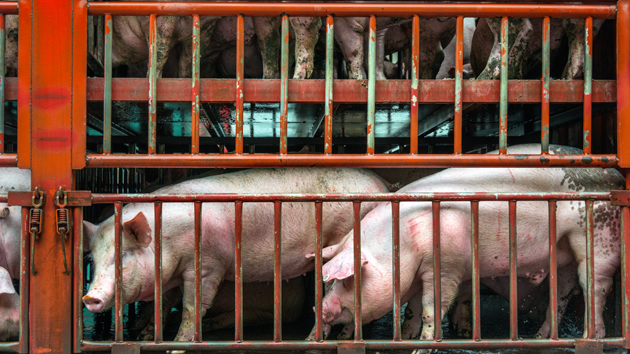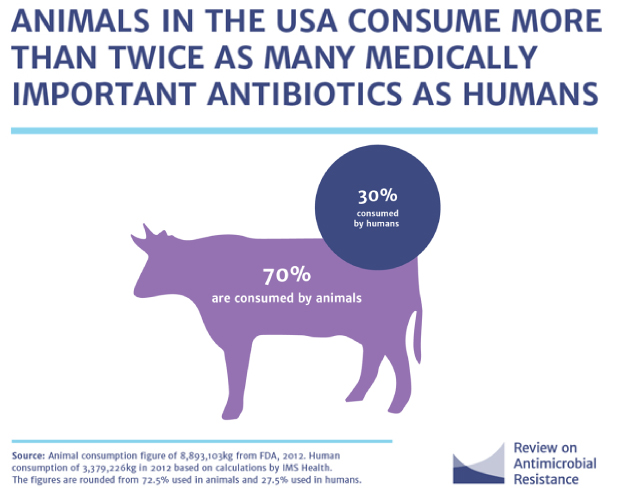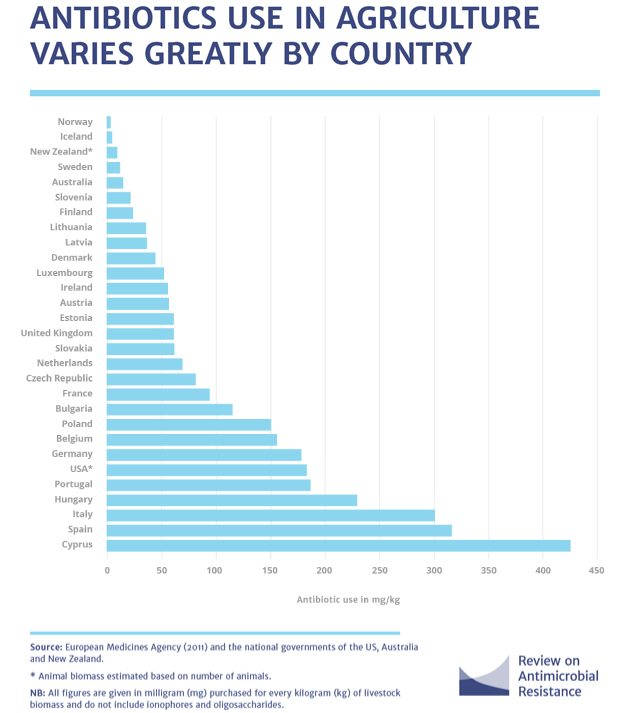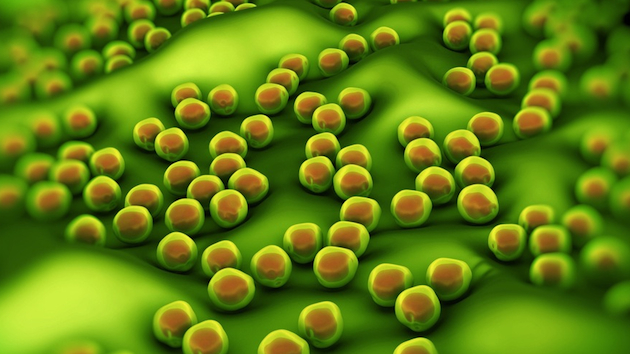
<a href="http://www.istockphoto.com/portfolio/pidjoe?facets={%22pageNumber%22:1,%22perPage%22:100,%22abstractType%22:[%22photos%22,%22illustrations%22,%22video%22,%22audio%22],%22order%22:%22bestMatch%22,%22portfolioID%22:[1628329],%22additionalAudio%22:%22true%22,%22f%22:true}">pidjoe</a>/iStock
As my colleague Tom Philpott has pointed out again and again, our habit of dosing farm animals with antibiotics is causing big problems. According to a new report commissioned by UK Prime Minister David Cameron and published in the Review on Antimicrobial Resistance, many countries now use more antibiotics for animals than for humans.
US livestock consume nearly 10,000 tons of medically important antibiotics per year—that’s more than twice the amount consumed by humans. The problem is, bacteria evolve to resist the antibiotics, and the more antibiotics are used, the more those drug-resistant strains make their way into the food chain. The authors estimate that unless countries take action, antibiotic resistance could claim 10 million lives each year by 2050.
“If we fail to act, we are looking at an almost unthinkable scenario where antibiotics no longer work and we are cast back into the dark ages of medicine,” said Cameron in a press release.

Some antibiotics are necessary for animal health, but the bulk of them are used preventatively in healthy animals and, more controversially, as stimulus for weight gain. (The European Union banned the use of antibiotics for weight gain in 2006.)
As the chart below shows, antibiotic usage varies widely by country. Some farmers argue that reducing antibiotic use will decimate the meat industry, but the report counters that “there is growing evidence to suggest that antibiotics used as growth promoters do not have as much economic benefit as previously thought”—especially in countries with advanced farming techniques. Denmark, for example, uses a relatively small amount of drugs—yet has become one of the largest exporters of pork in the world.
In addition to calling on countries to set a global target of antibiotic usage in livestock, the authors encourage a ban on the use of last-resort antibiotics, or drugs for which there is no replacement, in animals. The report comes just one month after scientists discovered bacteria resistant to colistin, a last-ditch antibiotic, in both animals and humans in China that likely came from overuse of the drug in agriculture.















